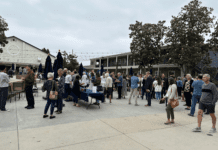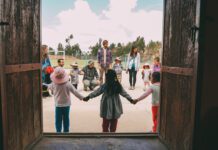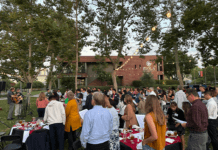These statistics underscore the importance of recognizing those who have blazed a trail before us. One widely unknown trailblazer in this regard was a man by the name of Alfredo Nañez born in Mexico in 1902. In the 1930’s he became the first Hispanic American Methodist to complete a course of formal theological training.[ix]
He later became a pastor, the presiding elder in the Rio Grande Conference, and President of the Lydia Patterson Institute (a Methodist high school in El Paso, which also functioned as a training center for ministers). From 1970-1973, Nañez served as Professor of Practical Theology and Lecturer at Perkins School of Theology.
Before he died in 1986, he edited for publication three Spanish hymnals and contributed, “Methodism among the Spanish-speaking People in Texas and New Mexico,” in the book One in the Lord (1977). He also authored History of the Rio Grande Conference of the United Methodist Church (1980). Nañez blazed a trail of theological education as well as a trail of Latino(a) Protestant storytelling. He leveraged his training to teach, lead, and write in ways few Hispanic Protestants in America did before him.
A Legacy of Scripture
If we’re not careful, we might miss the rich heritage Hispanic Protestants in the United States share. Many like Ambrosio González, Juan Gomez, Don Agapito Ortega, and Alfredo Nañez were transformed by the good news of Jesus because the Bible was given, read, or taught to them.
Justo Gonzalez summarizes the experience of many Latino/as with Catholic backgrounds reading the Bible for the first time when he writes,
The great appeal to Protestantism was in Scripture itself, which the Catholic Church had taught us to respect but not to read. For many Hispanics, both in the United States and in Latin America, the experience of hearing the Word for the first time, of being able to study Scripture in new ways, was revolutionary and liberating. After this, they could no longer understand how anyone could remain tied to a church that either forbade or discouraged the reading of Scripture, and they made every conceivable effort to bring other Hispanics to the same realization.
I hope that Latino(a)s who faithfully follow Jesus believing him by grace through faith would marvel at the valuable legacy that is ours; a legacy that made “every conceivable effort” to put the Bible in the hands of others. In the same way, I hope that we would be devoted to reading and teaching the Scriptures while serving the Church as Ambrosio González did.
I pray that we would treasure the Scriptures in our possession, and not view it as a simple book, but as the very Word of God that rocked the Gomez and Ortega families generations ago. I desire to see many follow the footsteps of Alfredo Nañez and commit to knowing the Bible and the God of the Scriptures by seeking to be trained (formally or informally) in hermeneutics, systematic, and historical theology, as well as practical theology.
Lastly, my yearning is to see other Hispanics dig deeper than I’ve dug and provide for us more snapshots of the precious legacy of faith handed down to us over many generations. Why?
Because after all, each snapshot of faith points to the God who orchestrated his good and gracious will, and we surely want him to receive all the glory as he alone deserves.
Endnotes
[i] Justo González, “Prologue” in Los Evangélicos: Portraits of Latino Protestantism in the United States.
[ii] Paul Barton, Hispanic Methodist, Presbyterians and Baptists in Texas (Austin, TX: University of Texas Press, 2006), 41
[iii] Thomas Harwood, History of New Mexico Spanish and English missions of the Methodist Episcopal Church from 1850 to 1910 (Albuquerque: El Abogado Press, 1910), 38-40.
[iv] Juan Francisco Martinez Guerra, “Origins of Protestantism Among Latinos in the Southwestern United States (1836-1900) in Los Evangélicos, eds. Martinez and Scott, 13.
[v] Juan Francisco Martinez, Sea la Luz: The Making of Mexican Protestantism in the American Southwest, 1829-1900 (Denton, TX: University of North Texas Press, 2006), 137-138.
[vi] Ibid., 136-137.
[vii] Writing in 1990, Justo Gonzalez lamented, “In 1985 and 1986, only four Hispanic— Protestant and Catholic—completed a Ph.D., Th.D., S.T.D. in a school accredited by the Association of Theological Schools. In the following academic year, the total number of graduates was again four— in this case none with a Ph.D. The figures for enrollment in the basic seminary degree program are much more encouraging, having risen from 264 in 1972 to 1,386 in 1987. However, even after this increase of 425% in fifteen years, Hispanics constitute only 2.5% of seminarians, both Catholic and Protestant.” Gonzalez, Mañana: Christian Theology from a Hispanic Perspective (Nashville: Abingdon Press, 1990), 35
[viii] Compare with the following data from “Racial/ethnic students represent largest growth area for theological schools, ” which states, “Black students, at 13.7 percent of the total reporting enrollment, comprise the largest segment of the racial/ethnic 38 percent, and their representation is reflective of the overall US black population, most recently calculated at 12.6 percent (2010). Asian and Hispanic students are represented in smaller numbers. Yet Asian students are represented at a rate approaching twice that of the general public, making up 8.4 percent of the reporting theological school student population versus 4.8 percent (2010) of the US population.” https://www.ats.edu/uploads/resources/publications-presentations/documents/racial-ethnicgrowth. pdf last accessed January 22, 2018.
[ix] Dr. Douglas Sweeney at Trinity Evangelical Divinity School graciously shared notes from his own findings to assist me in my studies. See also the Texas State Historical Association online database https://tshaonline.org/handbook/online/articles/fna19 last accessed January 22, 2018.
[x] González, Mañana, 72.











